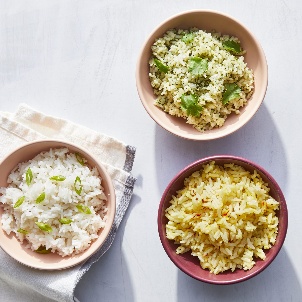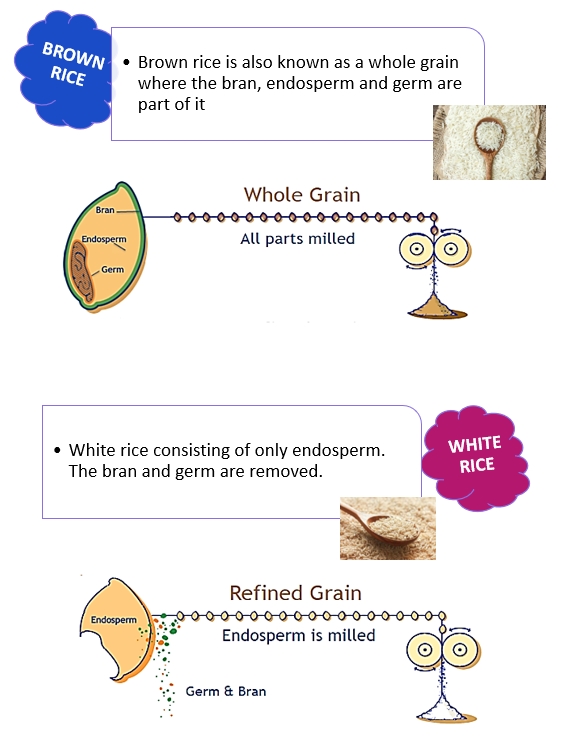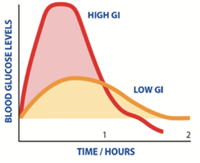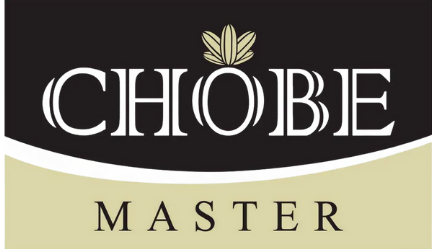
Who doesn’t like rice? Be it brown or white color, long or short. As long as it is R.I.C.E. and can give satiety to people. Oryza sativa, commonly referred to as rice, constitutes a staple in Asian nations' diets. It serves as a versatile accompaniment to various dishes or can stand alone as a meal. The preparation of rice spans diverse techniques, encompassing boiling, frying, and even transformation into powdered form.
RICE
The tiny rice kernel stands as a significant origin of carbs and protein, alongside numerous vital nutrients, nourishing billions globally. This holds especially true in emerging nations. Divided into three components—bran, germ, and endosperm—a singular grain harbors a wealth of sustenance. Enveloping the kernel, the bran, an outer shield, potentially houses antioxidants, B vitamins, and fiber. Nestled within, the germ yields B vitamins, protein, minerals, and wholesome fats. Lastly, the endosperm, predominantly carbohydrate and protein, contains a selection of vitamins and minerals.


Numerous items incorporate rice as their primary component, for example, noodles, cereal, and drinks. People are generally familiar with two variations of rice: the conventional white rice and the nutty brown rice. What sets each of them apart in terms of uniqueness? Let’s check it out.

BROWN RICE BENEFITS
Reduce Risk of Diabetes
Diabetes is connected to blood sugar control and carbohydrate intake. But, not all carbohydrates are bad. Consuming brown rice may help to decrease the blood sugar level as it has a low glycemic index (GI). It means that the digestion process is slower and has less impact on blood sugar levels. It is good to those with type II diabetes.
Improved Heart Health
A plant compound called lignan is contained in brown rice. It helps improve heart health by defending against heart disease. A study showed that the presence of lignin can lessen the amount of fat in the blood, cut down blood pressure, and decrease artery inflammation.
Better Weight Control
Brown rice is high in fiber compared to white rice. In each cup of brown rice and white rice (158g), there are 3.5g and less than 1g of fiber, respectively. Besides, due to fiber-rich in brown rice, those consuming it will become full for a longer time. This assists people to cut down the calorie intake.
Promote Satiety
The fiber is abundant in the brown rice where it aids to give fullness to people for a longer time.
WHITE RICE BENEFITS
Give Fullness
The fiber is abundant in the brown rice where it aids to give fullness to people for a longer time.
Easily Digest
White rice contains less fiber. The carbohydrates take less time to convert into sugar. This will help the digestion process occur quickly.
COMPARISON
| BROWN RICE | WHITE RICE |
| Whole Grain | Refined |
| Take more time to cook | Take less time to cook |
| High cost | Low cost |
| Shorter shelf life | Longer shelf life |
| Low glycemic index (50) | High glycemic index (73) |
| Naturally contain vitamin and minerals | Enriched with vitamin and minerals |
| More fiber | Less fiber |
| Low calorie | High calorie |

#FootNote of Glycemic Index (GI)
- A measure of how quickly and how much a food raises one’s blood sugar levels after eating.
- Low GI foods have a rating of 55 or less
- Medium GI foods are 56-69
- High GI foods are 70-100
Official Website: https://www.premiercereal.com

